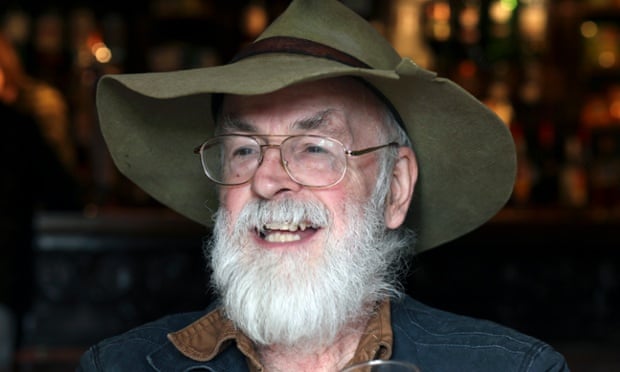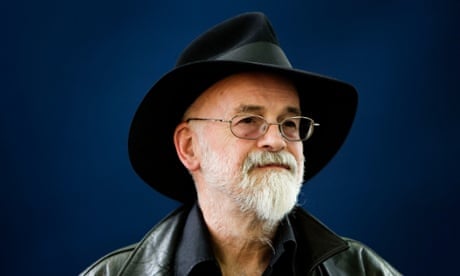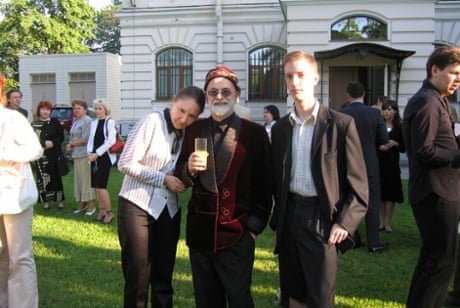Vol 4 No.
1 Winter/Spring 2015
Earth Tales: The
Challenge Ahead
Interview: Lauren Raine – Visionary
Profiled Artist
CJMT: What is the link to your
site? Where can we see your work?
CJMT: What do you want the world to
know about your work?
I guess I would feel that I’ve
succeeded if in some small way my work helps in the greater work of bringing
reverence to the Earth, and to the arising of the Divine Feminine.
CJMT: Who – or what – do
you see as your main influences?
Early on I became influenced by
the writings of Kandinsky (“Concerning the Spiritual in Art”) and
others, and rejected what I saw as an aesthetic that disregarded spirituality
and mysticism as being outside of “high art”. I find it ironic that
spirituality was a significant impulse in the early development of Modernism.
Theosophy, the Golden Dawn, Anthroposophy, as well as Einstein’s new physics,
enormously inspired the work of such innovators as Mondrian, Kupka, Kandinsky,
Arthur Dove, and others.
Later I discovered Joan Halifax
(“Journey of the Wounded Healer”), met Alex and Allyson Grey (“The
Sacred Mirrors”) and others, and began to think of art process in new
terms. Art for healing, art for transformation of consciousness, art as a
bridge between dimensions. During the 80’s I was involved with a group called
the Transformative Arts Movement, and I even wrote a book based on
interviews I did with visionary artists.
Rachel Rosenthal developed a
form of contemporary “shamanic theatre” that I found profound. I saw her
perform Pangaian Dreams in 1987, and every hair on my
body stood up. Sometimes, like a Sami shaman making the “yoik” she would allow
sounds to come through her that were absolutely electric, sounds and words that
charged the room. The Earth Spirit Community’s Twilight Covening introduced
me to participatory ritual theatre and I made the “Masks of the
Goddess” collection for the Reclaiming Collective’s 20thAnnual Spiral
Dance. I have great admiration for what these two groups have developed as
ritual process.
CJMT: Much of what you do
seems to tell a story – even the single, stand-alone pieces. Where do you think
that comes from?
The poet Muriel Rukeyser
famously commented that “the Universe
is made of stories, not atoms”.
I believe Native American
mythology – and perhaps contemporary quantum physics – would agree with her. My
patron Goddess is surely Spider Woman, the ubiquitous Weaver found
throughout the Americas in one mysterious manifestation or another. Among the
Pueblo peoples of the Southwest she was also called “Thought Woman” (Tse Che
Nako). As a Creatrix she brought the world into being with the stories she
told about it.
Myths and religions are stories,
some more glorified, archetypal, literalized or contemporary than others. I
think it is so important for artists of all kinds to recognize that we are
weavers of the stories of our time, we are holding threads that recede behind
us and extend beyond us into the future. We’re never weaving alone. So – what
kind of stories are we shaping, collaborating with, how do we understand the
gift of “telling the world” that
Spider Woman has bestowed on us?
CJMT: How would you
describe your art…? (influences, history, school-of-art, your aesthetic)
Perhaps “Cross disciplinary”? I
seem to jump around a lot, from sculpture to ritual theatre to painting
to…………….whatever seems to be the best medium of expression at the time.
Different “languages”. I guess I could say that my art-making is my spiritual
practice, whether it is done with community (as in theatre and ritual) or alone
in my studio.
CJMT: What did you learn
from working in theatre?
Being a visual artist is
solitary, and I’ve always wanted art forms that were participatory,
collaborative. Masks lead right into theatre, and questions about the
traditional uses of masks as well. Masks are such metaphors – you can’t look at
a mask, really look, without it suggesting some kind of being that wants to
manifest through it. They are vessels for all kinds of stories.
My colleagues (among them
Macha Nightmare, Ann Waters, Mana Youngbear, Diane Darling) and I have developed some wonderful ways of working with masks and
community theatre/ritual. In early Greek theatre a performance had three
components – the musicians, the narrators or Chorus, and the masked performers,
who would pantomime and dance the characters. We’ve often used that approach,
particularly with a Theatre in the Round, a Circle.
 Because the masks are dedicated
to the Goddess, we’ve brought neo-Pagan sensibilities to the ways we designed
our performances. This can include creating a ritual entranceway so the
audience enters a magical space, adding audience participatory components
to the performances, calling the elemental Quarters and/or casting a Circle in
theatrical ways, and concluding all performances with some kind of energy
raising activity with the audience. In Wicca that’s called “raising the Cone of
Power” and by so doing the blessing or overall intention is “released to do its
work”, finishing with “de-vocation”, which is often a great conclusion
with humor, or everyone gets up and dances, etc.
Because the masks are dedicated
to the Goddess, we’ve brought neo-Pagan sensibilities to the ways we designed
our performances. This can include creating a ritual entranceway so the
audience enters a magical space, adding audience participatory components
to the performances, calling the elemental Quarters and/or casting a Circle in
theatrical ways, and concluding all performances with some kind of energy
raising activity with the audience. In Wicca that’s called “raising the Cone of
Power” and by so doing the blessing or overall intention is “released to do its
work”, finishing with “de-vocation”, which is often a great conclusion
with humor, or everyone gets up and dances, etc.
It’s actually very effective,
and can be integrated as good theatre. For example, in “Restoring the Balance” (2004) we concluded with “Spider Woman”.
While the music played and the narrators told the tale, “Spider Woman” wove
invisible threads. With a rising crescendo of assistants, she wove a web with
the entire audience. And indeed, for that moment of
breathless intensity everyone in the theatre was literally connected, holding
onto a thread “from the Great Web” with everyone else. The “Blessing” was
experienced as part of the performance.
CJMT: What would you
like to say to other artists (of any genre)?
“Our job was not to just
re-tell the ancient myths,
but
to re-invent them for today. Artists are the myth makers.”
I agree entirely with Katherine
Josten, who founded the Global Art Project in Tucson, Arizona
– we are the myth makers of our time. So, what kind of myths are we
disseminating? What are the new stories, how are the old stories still
important – or not?
We have become a global society,
with a global crisis. I may sound like I’m preaching, but personally, I don’t
want to experience any more art forms that are self-indulgent, nihilistic,
violent forms that don’t further evolution into empathy in some way.
I’m not entirely comfortable
when people speak of contemporary artists as “shamans” as I have too much
respect for the long traditions of indigenous shamans, which have evolved
within their particular cultures for thousands of years. But I do know artists
can participate in healing and vision, and can find new contexts for creating
new forms of what might be called contemporary shamanism.
I’d like to quote from a 1989
interview I did with the early performance artist, Rafael Montanez Ortiz. In
the 80’s he studied energy healing, as well as working with some native shamans
in the U.S. and South America. Raphael was also a great influence for me. In
the conversation I recorded and transcribed, we were talking about what an “art
of empathy” might be, and he spoke about his studies in native Shamanism:
“You feel what you
do……….Within the participatory traditions found in (indigenous) art, there is
no passive audience. That’s a recent idea, which is part of the compromise, the
tears and breaks from art’s original intentions. Ancient art process was a
transformative process; it wasn’t a show, it wasn’t entertainment. We need to see ourselves again as part of a
brilliant, shimmering web of life. An artist at some point has to face that
issue. Is the art connecting us and others in some way, or is the art
disconnecting us and others? I think it is not enough to just realign ourselves
personally either – as we evolve, our art should also do that for others, and
further happen outside of the abstract. It must be a process that in its form and
content joins us with the life force in ourselves, and in others.” (1989)
CJMT: Do you feel
that the questions of the spirit influence what you do?
I think Spirit influences much
of what I do, and I’m not alone in that by any means! There’s a many-layered
conversation going on all the time when you open creative channels.
Working in the collective
process of ritual theatre is always amazing. When you make a strong, vibrant
container with performance that is alive and meaningful for the participants,
then dreams and synchronicities abound, the “container” of the developing work
becomes charged. “If you build it, they will come”.
I remember in Joseph Campbell’s
“Power of Myth” interviews with Bill Moyers, he spoke about “invisible means
of support”. I think we’re supported by quite mysterious sources all the
time, and when an artist finds her or his “burning point”, or for that matter a
group shares it, doors do seem to open where we did not think they would.
CJMT: Would you like
to tackle your relationship to the fines
artes?
Oh, I get a headache when I
think about “the art world”! But I did get an MFA, I have been a part of it,
and I’m probably unfair in my allergic reaction. It’s just that I think the
premise of the “art world”, as it reflects capitalism, is way off from the
original functions of art.
 Of course artists need to be
supported by their communities. But when art becomes an “investment” and value
is determined as a financial commodity (witness some of those Sotheby Parke Bernet
auctions) you enter into a form of “soul loss”. Within this construct there is
no acknowledgement of the transformative dimension of art. The conversation is
corrupted. People are taught to appreciate a work of art because it is hanging
in a museum, or worse, it is “worth millions”.
Of course artists need to be
supported by their communities. But when art becomes an “investment” and value
is determined as a financial commodity (witness some of those Sotheby Parke Bernet
auctions) you enter into a form of “soul loss”. Within this construct there is
no acknowledgement of the transformative dimension of art. The conversation is
corrupted. People are taught to appreciate a work of art because it is hanging
in a museum, or worse, it is “worth millions”.
I always cringe inwardly when I
hear someone talk about a painting they have in terms of what they paid for it,
or what they hope it may be “worth”. The real “worth” should be what pleasure,
insight, meaning, and questions they derive from being in the presence of a
work of art, from being able to live with it in some way.
I had a real revelation in
Bali, where they really don’t have an understanding of what we call “being an
artist” at all, let alone the rather “macho” myth of the alienated “great
artist”. When I lived there, I found that virtually everyone made some kind of
art, whether dance, offerings, music, etc., and virtually all of it was
“dedicated to the Gods”. It all had a ceremonial/ritual purpose. Art to the Balinese
is a way to pray.
They obviously make many things
for money, including masks. But the “special masks”, the sacred masks, are kept
in the Temples, commissioned and repaired by traditional Brahman mask makers.
They are not made available for tourists except as they may be seen in
performances of the traditional dramas such as the battle between light and
dark represented by the dragon/lion Barong and the witch Rangda; after such
uses they are “purified” with holy water before being returned to the Temple.
 This revelation became an
inspiration to create a contemporary, multi-cultural collection of “Temple
Masks”.
This revelation became an
inspiration to create a contemporary, multi-cultural collection of “Temple
Masks”.
That’s how I conceived of “The Masks of the Goddess” – as
special masks dedicated to the Divine Feminine throughout world
mythologies.
CJMT: A Couple of
technical questions:
a)
What is the process you undergo
in creating a mask?
For the face masks I find a
person with a face I like. Then I take a plaster impregnated bandage cast that
becomes a plaster positive cast, and then I form the mask over that cast with a
thin, flexible leather. The technique is very similar to the old Italian “del
Arte” mask technique.
b)
How did you find *your* media
and materials in the very beginning?
I’d like to think the masks
found me. But I’m somewhat embarrassed to admit that in the very beginning I
started making masks because I was broke. I was a jeweler at the Renaissance
Faires and business was bad, so I started making masks hoping they would sell
better. They did, and very soon they began to introduce me to a whole new
world.
CJMT: What do you think the
state of visionary art is today?
There are some great visionary
artists out there. Film in particular, with special effects technology, is
quite astounding. Think about AVATAR – what an incredible feat, to create an
entire cosmos in that way. The Life of Pi – astounding.
Ritual Theatre is an art form
that is literally “visionary”, and I wish it was more widely experienced in
mature, effective ways for audiences other than groups that are generally
esoteric. As Americans, many feel we’ve lost our rituals by and large, or the
ones we have don’t have much energy left in them. People are hungry for potent
events that offer rites of passage, mythic enactment and immersion, and shared
transpersonal, visionary experiences. It’s really a very ancient human heritage
continually renewed.
I was thinking of a ritual I
experienced with the Earth Spirit Community years ago close to
Samhain, All Souls Day. We processed in the twilight through a field with
candles into the ritual hall, accompanied by the distant sound of drums.
The final segment of the ritual
involved everyone being seated on the cold floor, in a large dark room, and
blindfolded. For what seemed like forever we heard distant voices, people
brushed by us, hands moved us around, strange music was heard. It was
powerfully disorienting, suggestive, and frightening. Then at last our
blindfolds were removed, and we found ourselves in a room beautifully
illuminated with candles. In the center of the room was a woman in white,
surrounded with light, flowers, fruits, water – the Goddess herself, the
“return of the light”. Finally, as we left we were greeted by figures with
mirrors for faces: we beheld our own reflections.
I’ll tell you, you felt that
experience! We had truly been “between the worlds”. When we left the ritual and
gathered for food and drink, every one of us felt love for each other and joy
for being alive.
CJMT: Any final
words?
Here’s a quote I love:
“Stories
are not abstractions from life but how we engage with it. We make stories and
those stories make us human. We awaken into stories as we awaken into language,
which is there before and after us. The question is not so much “What do I
learn from stories” as it is “What stories do I want to live?” Insofar as I’m
non-dual with my narratives, that question is just as much, “What stories
want to come to life through me?“
David R. Loy, “The World is Made of Stories

.png)
















